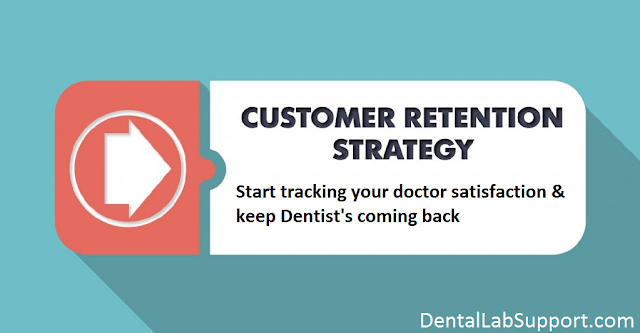
By: David H. Khalili
Founder of DentalLabSupport.com
Too many dental laboratories approach customer retention with arbitrary efforts. They think that as long as they sell a good product and offer the best possible customer service, they'll automatically build customer retention.
This just leaves businesses spinning their wheels. For real improvement, you need an actual strategy that goes into specifics. Here's one way to go about improving your customer retention:
Start tracking your doctor satisfaction
The first mistake dental labs make is not tracking their customer satisfaction. Many just assume that there's no way to measure this metric quantitatively. While customer satisfaction seems qualitative in nature, it's absolutely possible for dental labs to track it.
Test different methods and keep Dentists coming back
Once you have a concrete idea of your customer satisfaction, you can start testing with different methods. The idea is to throw things at the wall one-by-one and see what sticks.
A common customer retention tactic is to introduce a customer loyalty program. A recent Business.com article explains why you should try this out and track its success:
"Using rewards systems to secure customer loyalty is an old tactic, but it’s an effective one. There are many loyalty program options for restaurant owners to choose from. Make sure that the program you choose is supported by your POS System before investing, as it will help you accumulate invaluable customer data."
There are many programs you can create to keep your dentist's coming back. Consider offering discounts, adding more value to your service, and giving coupons to repeat customers.
This, of course, is just one tactic. There are other possibilities, such as using social media and email marketing to bring your customers back. The important thing here is to try each tactic one-by-one so there's no problem isolating the cause for changes in customer retention.
Check for changes in your customer satisfaction and customer retention
Now that you have a system to measure your customer satisfaction and have tested tactics to improve customer retention, you can see if your strategy made any difference.
See if your customer loyalty program or social media marketing efforts made any impact on your customer retention. Similarly, track your customer satisfaction over time to see if there were any changes in its trend.
Customer satisfaction and customer retention are related, but they don't always move together. It's possible for your customer satisfaction to increase and your customer retention to stay stagnant or vice-versa.
In this respect, it's important to prioritize one goal over the other. Keep in mind that customer satisfaction is more volatile in the short-run while customer retention is likely a more important indicator in the long-run.
It'll never be an exact science, but there are steps you can take to push customer retention in that direction. To talk more about customer retention, or anything else, contact us today by visiting DentalLabSupport.com or calling 1-888-715-9099.

